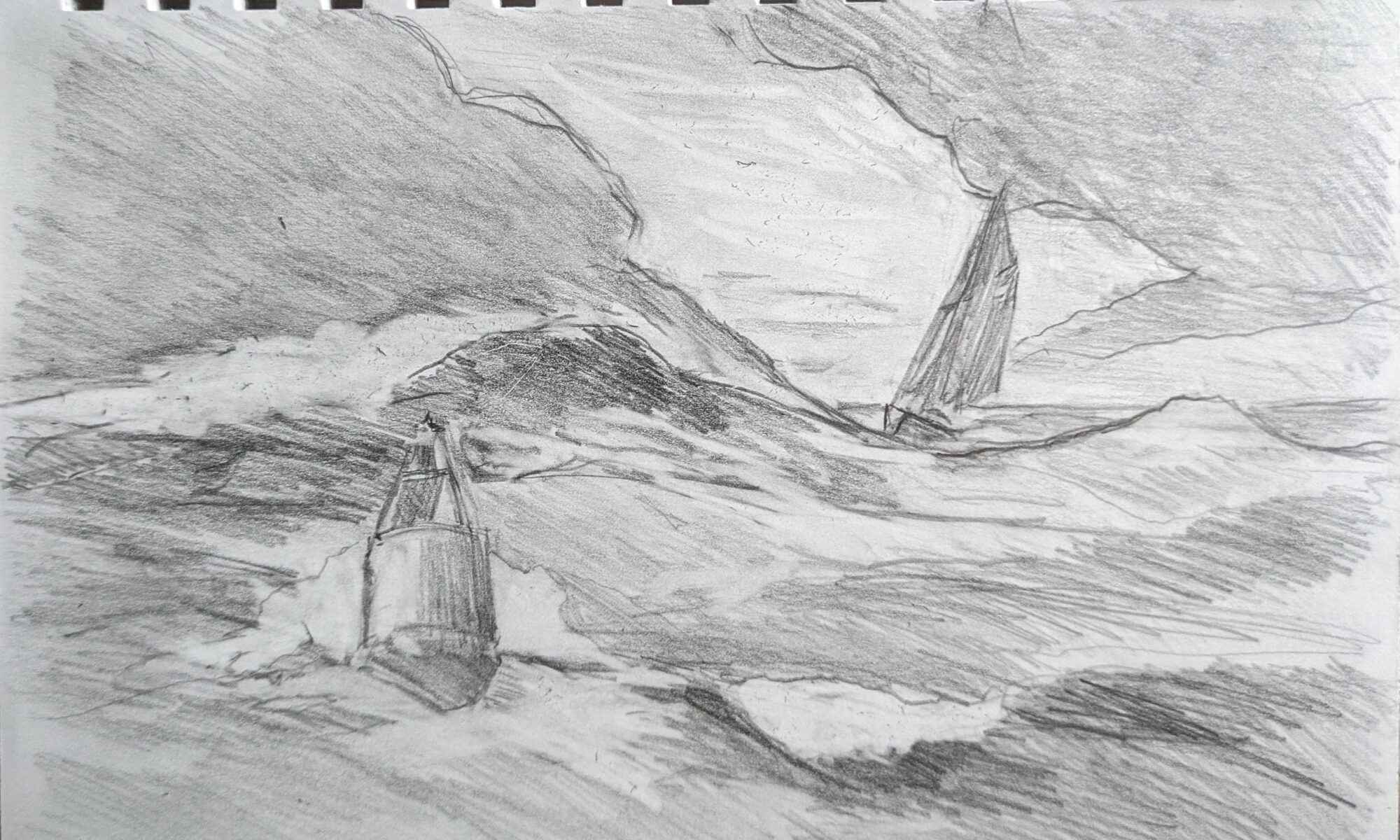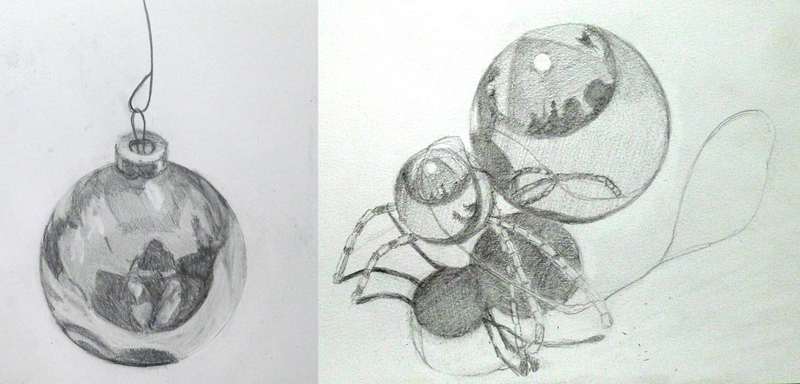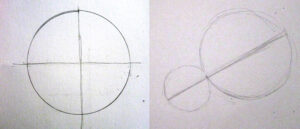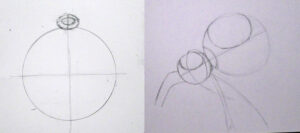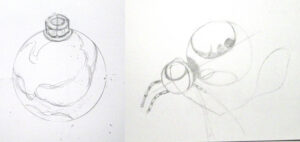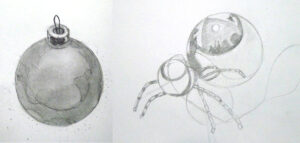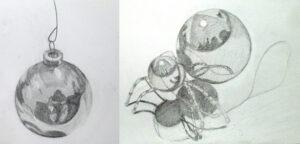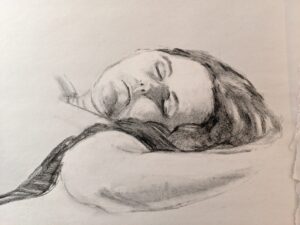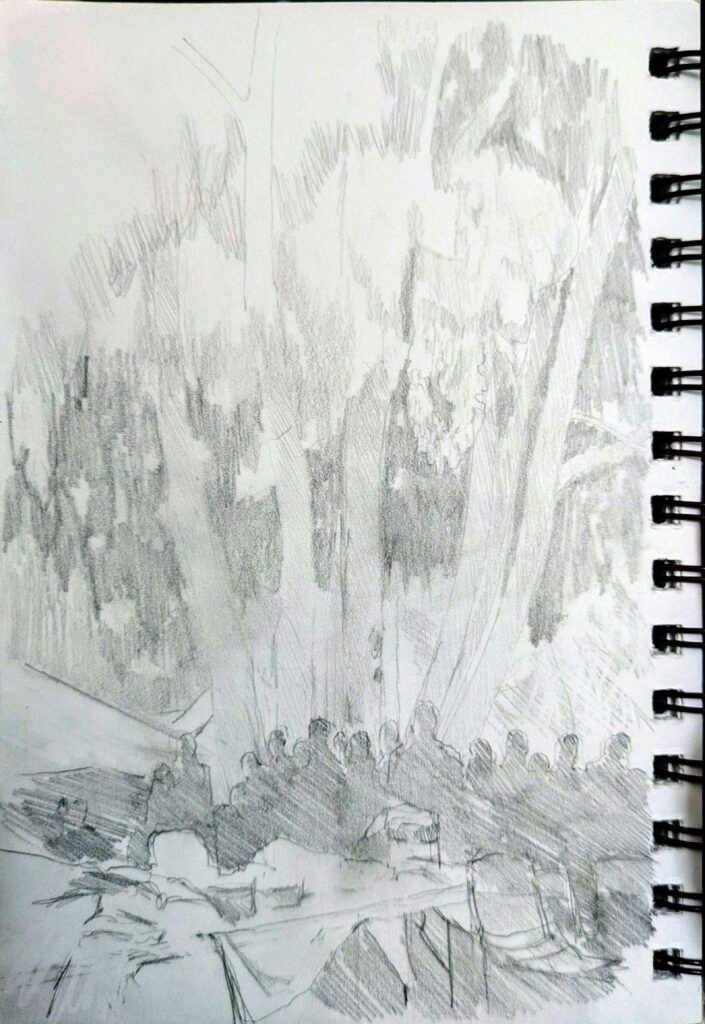
On Sundays, I have between 35 and 40 minutes to draw, because that’s how long Quinton Self will preach. After decades of drawing in church, I can tell you exactly where the pastor is in his or her sermon; I almost always wind up at the same time.
It’s helpful to know how long you have to draw, because you can choose your level of finish in advance. A 30-second gesture drawing and a three-hour portrait can both be stylish, finished drawings that tells the viewer something about the subject. But for either to work, they must be planned.
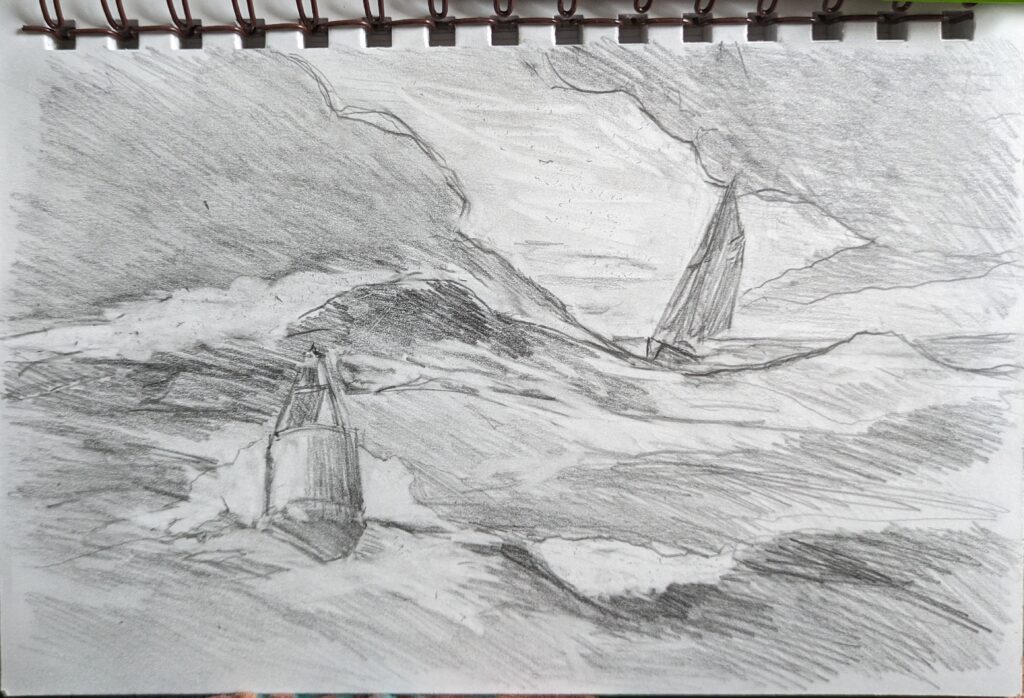
What’s the difference?
Gesture drawing captures the essence and movement of a subject quickly, focusing on flow and rhythm. A finished drawing involves refining details and form for a polished representation. The technique in gesture drawing is loose and spontaneous, whereas finished drawings require precision. Gesture drawings may take just a few seconds, while finished drawings can take hours or even days, depending on complexity and detail.
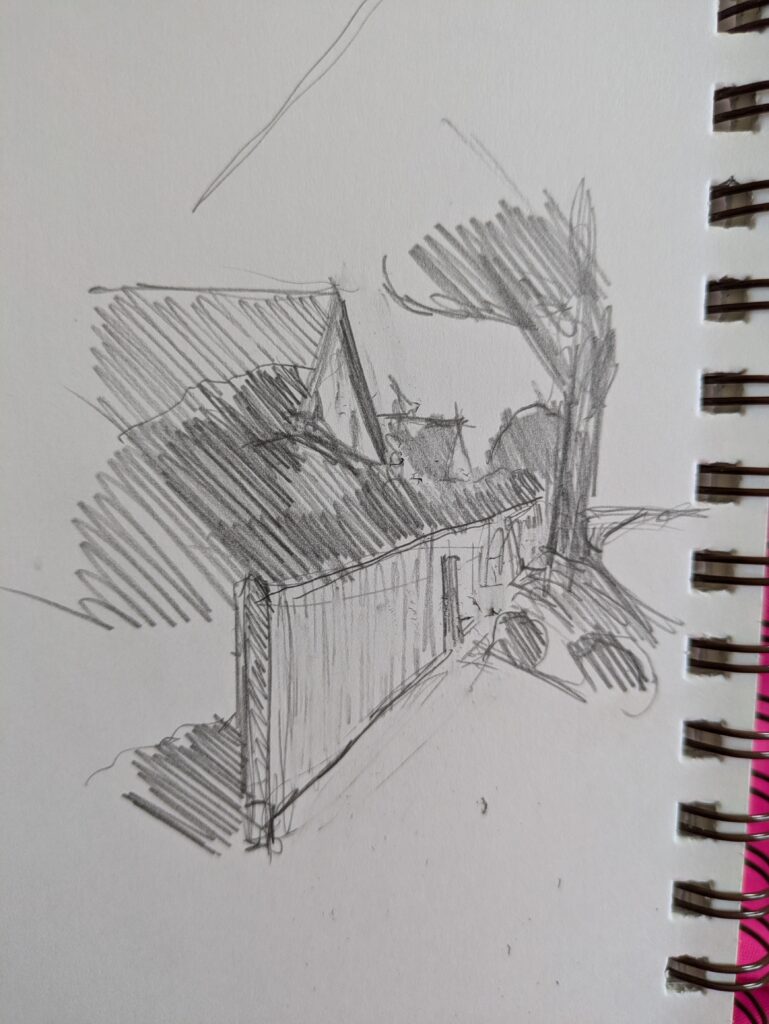
Why draw in the first place?
I primarily draw as the first step in designing a painting. It’s far faster than sketching out the idea in paint, only to realize that the composition I had in mind is weak. I’ll draw when I don’t have time to paint or it’s not appropriate (as in church). But all that implies that drawing is somehow lesser than painting. Drawing is a powerful form of expression on its own.
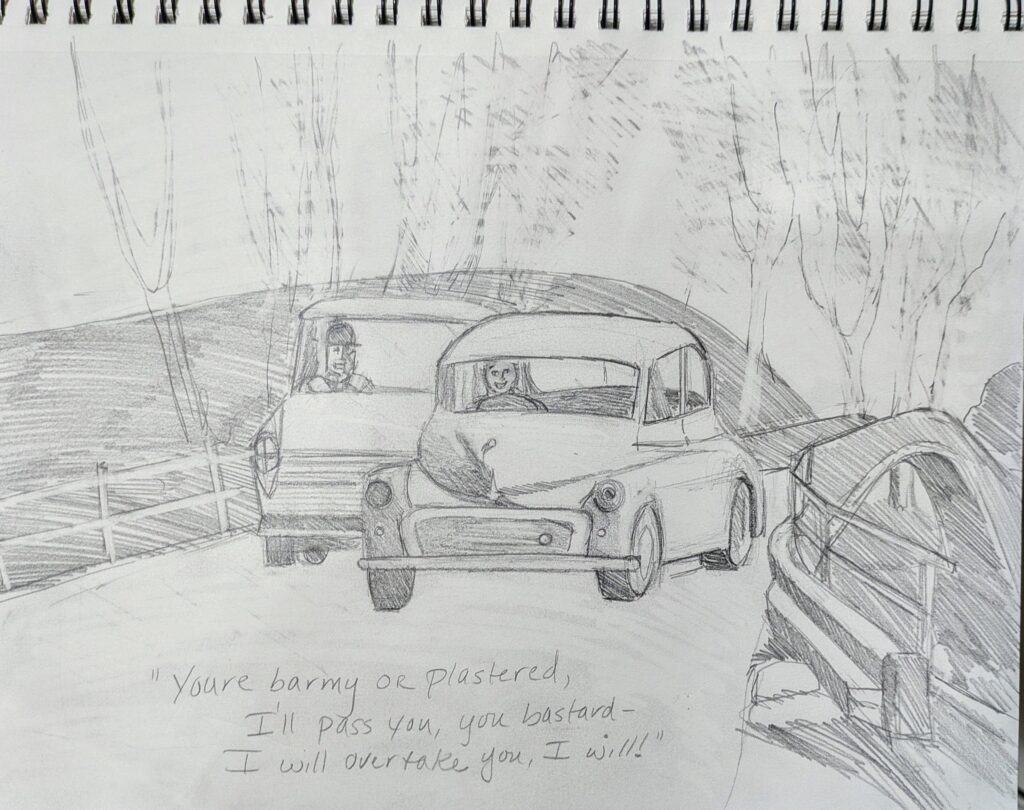
How long does it take to get good at drawing?
It’s a disservice to beginning painters to not insist that they first learn to draw. It’s also a disservice to let them think that drawing is a magic trick or something we’re born knowing innately. Anyone of normal intelligence and vision can draw; they just need to learn how.
It doesn’t take long at all to learn. I taught my friend Amy Vail to draw in one short session; a week later, she was drawing like an old pro.
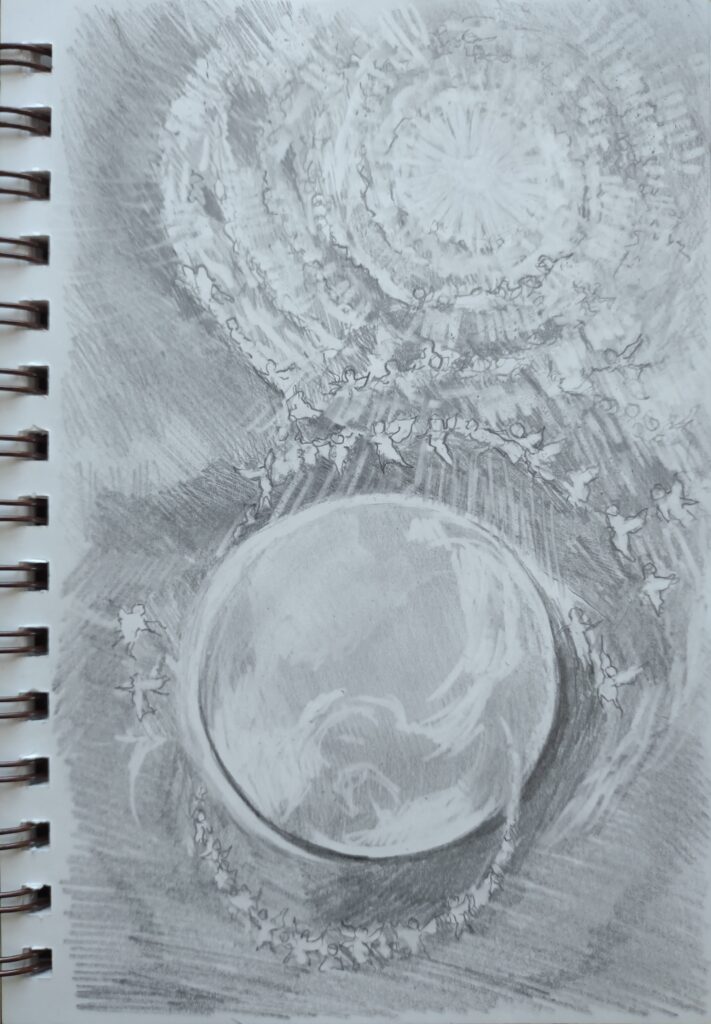
From sketch to realized work
Sometimes you need to sketch before you can draw. Finished drawings require composition, proportion, lighting and perspective, just as finished paintings do. Andrew Wyeth created many drawings before he dragged out his paint kit, and many others just for the sheer joy of drawing.
Knowing how long you have to draw is your best tool to finish strong. That’s not always possible; for example, you will never know how long you have to wait at the doctor’s office. But when you do, you can direct your pencil to what matters in a sensible way.
I don’t have a drawing class scheduled, but if you want to take it next time it’s offered, email me here and I’ll put you on a list.
An apology
Right before I left to teach aboard American Eagle last week, my laptop converted itself to a brick. (That happens to me frequently, and I can’t really explain why.) Friday’s blog post was written on my phone, and it reads like it. Sorry about that.
When I got home, I told my daughter I needed to order a replacement. “Don’t do that!” she said. “Your new one is already there!” I’m typing on it now, using remote desktop. Any bumps in the road going forward are just from reinstalling software and restoring my last backup. I hope this one lasts longer than 29 months I got out of the last one. Sigh.
Reserve your spot now for a workshop in 2025:
- Advanced Plein Air Painting, Rockport, ME, July 7-11, 2025.
- Sea and Sky at Acadia National Park, August 3-8, 2025.
- Find Your Authentic Voice in Plein Air, Berkshires, MA, August 11-15, 2025.
- Immersive In-Person Fall Workshop, Rockport, ME, October 6-10, 2025.

